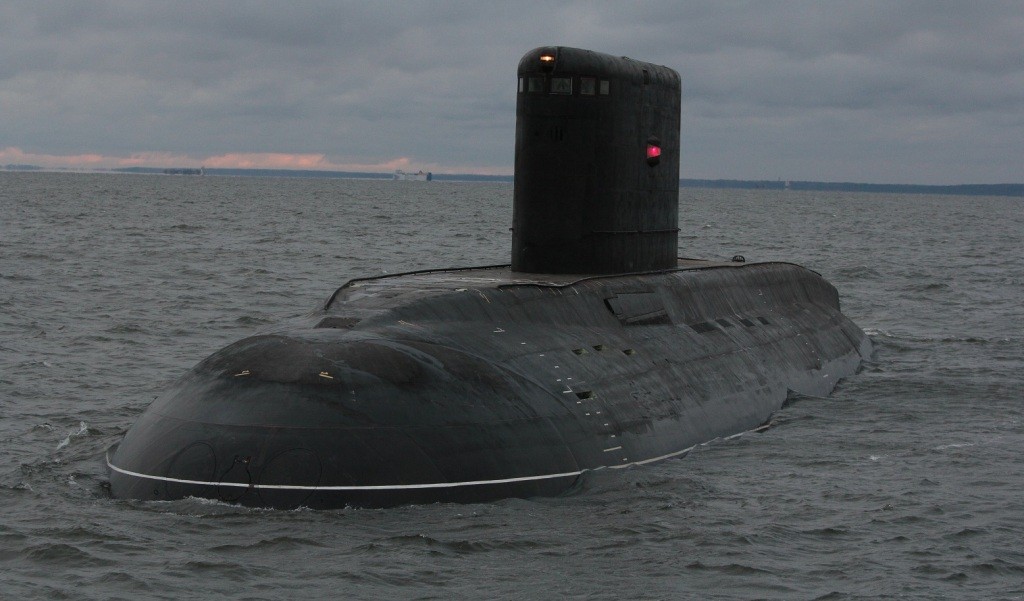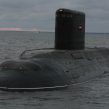
Russia Uses Syria Operation to Test Weapons Systems
Publication: Eurasia Daily Monitor Volume: 12 Issue: 220
By:

Since initiating their military operations in Syria, the Russian Armed Forces continue to test and experiment with weapons systems and various platforms in the course of the campaign. These tests appear to relate to a wide variety of advanced systems and seem designed to assess the reaction of other actors to their use during ongoing Russian operations. To date, this has involved, among others, the use of strategic bombers and sea-launched cruise missiles (SLCM) to strike targets at great distances. This process identifies the priority systems being examined and the nature of General Staff planning for their introduction during the various phases of the air operations in Syria (Nezavisimoye Voyennoye Obozreniye, December 4).
After the deployment of the Rostov-on-Don Project 636 diesel electric submarine, with a reduced signature, to the eastern Mediterranean, the Russian Ministry of Defense announced additional SLCM strikes against Islamic State targets in Raqqa. According to Defense Minister Sergei Shoigu, the 3M-14 Kalibr was used on December 8. The 3M-14 Kalibr is a cruise missile variant specifically designed for submarines, and this was the first time this type of Russian cruise missile was used in the operation. Reportedly, the targets were Islamic State ammunition dumps and oil infrastructure (Interfax, December 8, 9).
While the use of such systems during these operations may not be wholly necessary, they form a component of experimentation undertaken by the General Staff to assess the performance of these weapons. Last month’s decision to execute air-launched cruise missile (ALCM) strikes using strategic bombers presumably depended on cooperation with Tehran, since much of this attack was carried out using Iranian airspace. Those November 18 strikes were conducted by Tu-22M3, Tu-160 and Tu-95MS platforms and targeted command centers, ammunition facilities and oil infrastructure. These bombers were also used to drop unguided ordinance on enemy targets. However, the strikes included the use of the X-101 ALCM. Tu-160s performed 12 sorties, launching 50 X-101 ALCMs. The X-555 ALCM, introduced into service in the mid-2000s, was launched from Tu-95MSs; during four sorties, around 15 X-555s were fired. Defense industry sources suggest some technical problems with these cruise missiles, though the Russian defense ministry indicated general satisfaction with their performance (VPK, December 2).
These strikes contained a number of planning challenges for the defense ministry and General Staff. First, the planned use of long-range aviation had been drawn up by the General Staff much earlier, but the timing appears to have been influenced by the confirmation of the terrorist downing of the Russian Metrojet airliner in Egypt; this shift facilitated a pre-planned usage of these platforms. Additionally, it demanded overcoming other challenges, including the use of multiple air routes, flying sorties from a number of Russian bases, coordinating mid-air refueling, and accessing close air support in Iranian airspace, supplied by Iranian fighter jets (VPK, December 2).
These examples of Russian weapons systems being tested in Syria are by no means restricted to the air campaign itself, as Moscow has sent numerous military assets to the Middle Eastern country, including sophisticated air defense and electronic warfare systems, and supplied the Syrian Army with artillery and hardware. One illustration of this is the appearance in the Syrian theater of the advanced Russian T-90A tank. Vladimir Gundarov, the managing editor of Nezavisimoye Voyennoye Obozreniye, highlighted its appearance in the inventory of the Syrian Army following reported sightings of the platform at the Russian airbase in Latakia; in early October, the Syrian Army was using T-90As in Aleppo. While their performance in areas of operations will interest the General Staff, it is worth noting that the export version of the platform is insufficiently optimized for military operations, though an undoubted improvement on other options in the Syrian Army’s inventory. Specifically, the on-board optical-electronic suppression system increases the chances of survival in combat but does not guarantee full protection in offensive operations. Gundarov also notes that there are modifications of the T-72 main battle tank, which Moscow has refrained from deploying in Syria to boost local military capabilities. In this sense, it seems the weapons and equipment transfers from Russia to Syria are cautious and not necessarily filling the demands of the local military (Nezavisimoye Voyennoye Obozreniye, December 4).
While the theme of Russian military experimentation in Syria is clear, there is also evidence of adjustment of supplying systems to this theater in response to changes in the operational environment. The clearest signal of this nuanced planning capability stems from the November 24 Turkish downing of the Russian Su-24 that had violated Turkish airspace. Various air defense and other assets were moved to Syria in addition to offering more fighter support for missions carried out by the Aerospace Forces (Vozdushno Kosmicheskikh Sil—VKS) (Nezavisimoye Voyennoye Obozreniye, December 4; Vedomosti, November 26). Moscow deems these adjustments to be required in order to ensure continued access to areas close to the Turkish border. But some Russian analysts question just how much the air campaign will achieve without the support of highly trained counterterrorism forces, rather than relying on a largely beleaguered Syrian Army (VPK, December 9).
As additional modern assets enter service in Russia’s Armed Forces, such as more Su-34s, it is highly likely that these will be further tested in combat operations in the Syrian theater (Nezavisimoye Voyennoye Obozreniye, December 4). Besides the utility of testing weapons systems and platforms in Syria, Russian analysts also note that pilots and ground crews are gaining invaluable operational experience that could be used in other theaters such as Iraq. Although the Iraqi government has not requested Russian air support, it remains part of the Moscow-Baghdad-Tehran-Damascus axis, which facilitates Russia’s involvement in Syria (VPK, December 9).
Moscow has demonstrated considerable appetite for testing and experimenting in its recent military operations, long evident in its activities in Donbas and now more clearly revealed in Syria. These lessons learned will be calibrated into future Russian military operations, so observers will need to pay attention to the system types being used and tested during the air campaign in Syria. Overall, Moscow’s military planning attention concentrates on the performance of the recently formed VKS, improvements to command and control, as well as joint operations linked to foreign or coalition partners; Russian General Staff lessons based on this operation will feed into how the military conducts operations in other theaters. Meanwhile, Russia is increasingly using sophisticated and highly advanced platforms and systems in its operations, and placing elements of such assets in strategic locations ranging from the Arctic to Crimea: Syria is only the latest extension of this pattern.




